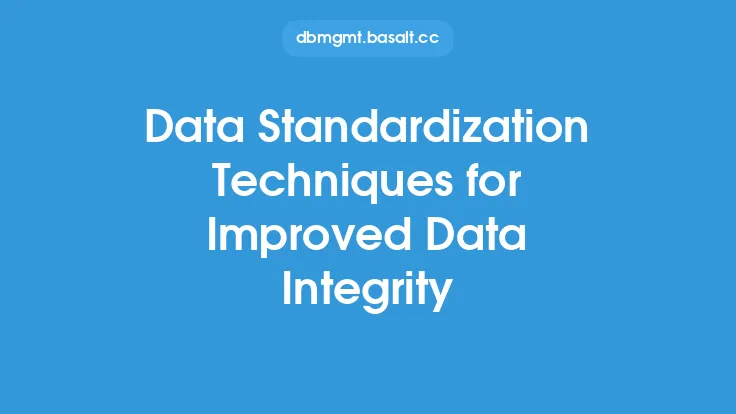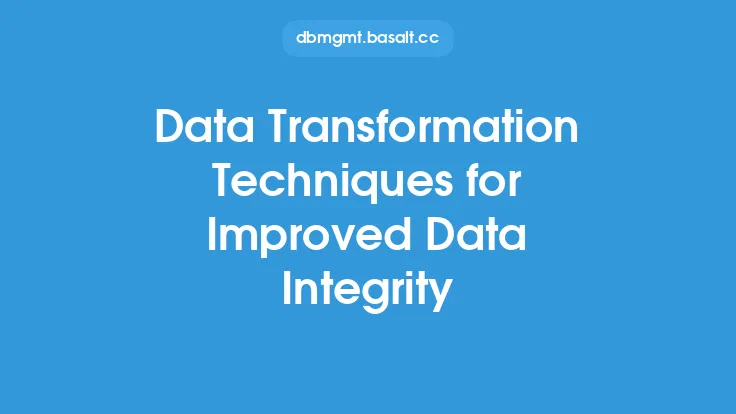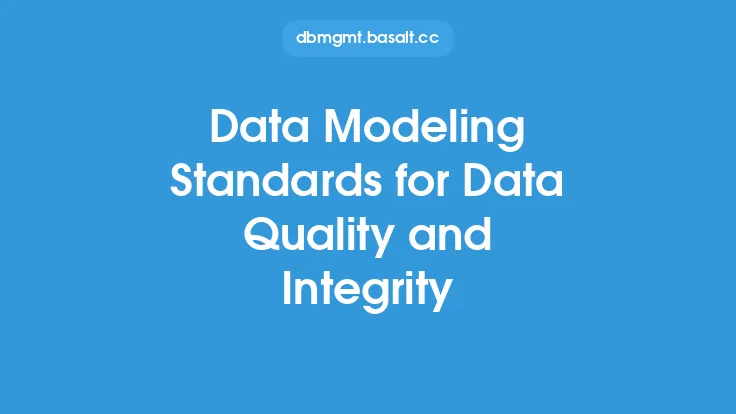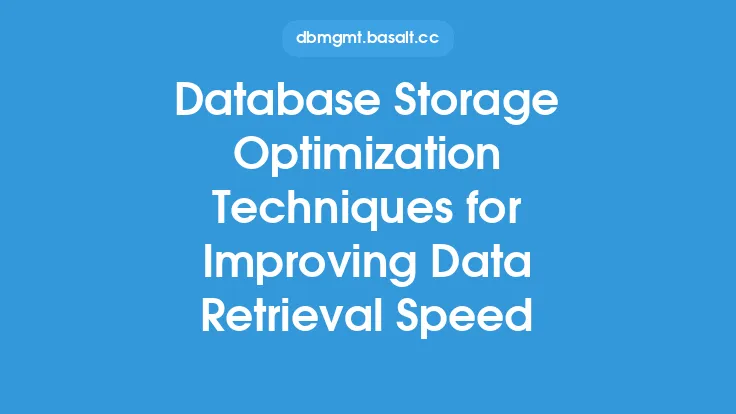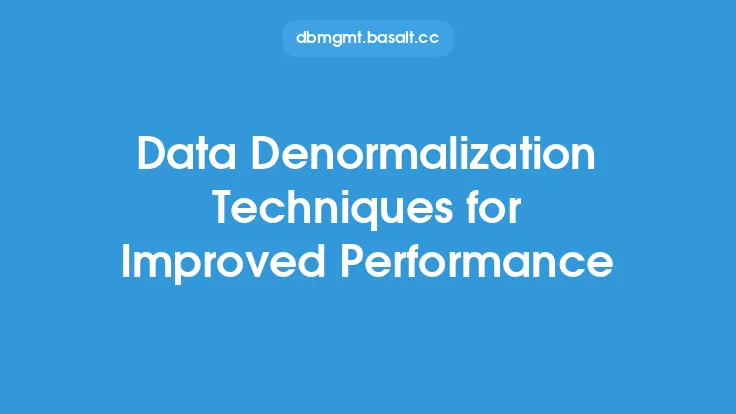Data validation is a critical process in ensuring the accuracy, completeness, and consistency of data in various applications, including databases, web forms, and data warehouses. It involves checking data for errors, inconsistencies, and conformity to predefined rules and formats, with the ultimate goal of improving data integrity. In this article, we will delve into the various data validation techniques that can be employed to improve data integrity, exploring their technical aspects and applications.
Introduction to Data Validation Techniques
Data validation techniques can be broadly categorized into two main types: manual and automated. Manual validation involves human intervention to check data for errors and inconsistencies, whereas automated validation uses algorithms, rules, and software tools to perform the validation process. Automated validation is generally more efficient and effective, as it can handle large volumes of data quickly and accurately. However, manual validation may still be necessary in certain situations, such as when dealing with complex or nuanced data that requires human judgment.
Types of Data Validation
There are several types of data validation, including:
- Format validation: This involves checking data to ensure it conforms to a specific format, such as date, time, or phone number.
- Range validation: This involves checking data to ensure it falls within a specified range, such as a numeric value between 1 and 100.
- Pattern validation: This involves checking data to ensure it matches a specific pattern, such as a credit card number or email address.
- Check digit validation: This involves checking data to ensure it includes a valid check digit, which is a calculated value that verifies the accuracy of the data.
- Cross-validation: This involves checking data against other data or sources to ensure consistency and accuracy.
Data Validation Rules
Data validation rules are used to define the criteria for validating data. These rules can be based on various factors, such as data type, format, range, and pattern. For example, a validation rule for an email address might check that the data contains the "@" symbol and a valid domain name. Validation rules can be implemented using various techniques, including:
- Regular expressions: These are powerful patterns that can be used to match and validate data.
- SQL constraints: These are rules that are applied to data in a database to ensure data integrity.
- Data validation frameworks: These are software frameworks that provide a set of tools and libraries for validating data.
Data Validation Algorithms
Data validation algorithms are used to implement data validation rules and techniques. These algorithms can be simple or complex, depending on the specific requirements of the application. Some common data validation algorithms include:
- Levenshtein distance algorithm: This algorithm is used to measure the distance between two strings, which can be useful for validating data that contains typos or errors.
- Luhn algorithm: This algorithm is used to validate credit card numbers and other types of numeric data.
- Modulus algorithm: This algorithm is used to validate data that requires a check digit, such as a UPC or EAN code.
Data Validation Tools and Software
There are many data validation tools and software available, ranging from simple scripts and libraries to complex frameworks and platforms. Some popular data validation tools include:
- Apache Commons Validator: This is a Java library that provides a set of tools and utilities for validating data.
- jQuery Validation: This is a JavaScript library that provides a set of tools and utilities for validating data in web forms.
- DataCleaner: This is a data validation and cleansing tool that provides a range of features and functions for improving data quality.
Best Practices for Data Validation
To ensure effective data validation, it is essential to follow best practices, such as:
- Define clear validation rules: Validation rules should be clearly defined and documented to ensure consistency and accuracy.
- Use automated validation: Automated validation is generally more efficient and effective than manual validation.
- Test validation rules: Validation rules should be thoroughly tested to ensure they are working correctly.
- Monitor and maintain validation rules: Validation rules should be regularly monitored and maintained to ensure they remain effective and up-to-date.
Conclusion
Data validation is a critical process in ensuring the accuracy, completeness, and consistency of data in various applications. By employing effective data validation techniques, rules, and algorithms, organizations can improve data integrity and reduce the risk of errors and inconsistencies. Whether using manual or automated validation, it is essential to follow best practices and use the right tools and software to ensure effective data validation. By doing so, organizations can ensure that their data is reliable, trustworthy, and fit for purpose.
